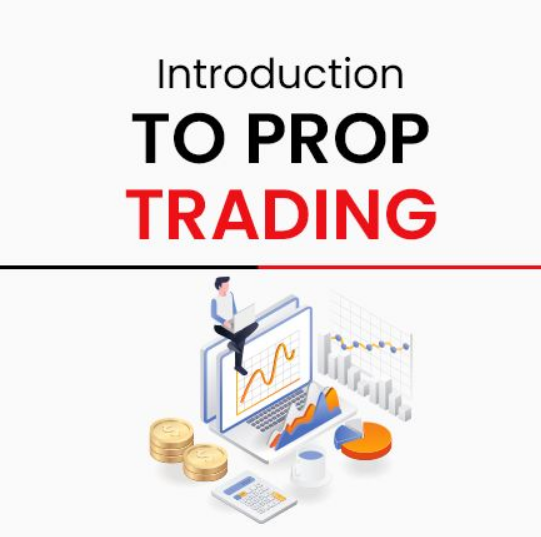Proven Prop Trading Strategies: Advanced Tactics for Scaling Profitability
In today’s competitive financial landscape, prop trading remains a key avenue for capitalizing on market opportunities with proprietary strategies. This comprehensive guide delivers advanced insights on prop trading strategies, in-depth tool comparisons, and actionable steps for overcoming common pitfalls in backtesting and live trading. Perfect for junior traders, senior quants, risk managers, and firm owners alike, this article empowers you with data-driven methods, case studies, and expert guidance to scale your prop trading operation.

Understanding Prop Trading and Its Modern Landscape
Prop trading involves traders using a firm’s capital to execute trades, rather than their own. The strategies, risk management frameworks, and backtesting tools leveraged in this arena can differ significantly from those used by retail traders. With increasing regulatory oversight such as MiFID II, ESMA regulations, and NFA rules, staying compliant while maximizing returns is more critical than ever.
Figure 1: An illustrative snapshot of a TradingView backtesting report highlighting performance metrics in a prop trading environment.
Key Strategies for Advanced Prop Trading Performance
Data-Driven Backtesting and Automation
Backtesting is a foundational element for verifying prop trading strategies. Advanced techniques include:
- Event-Driven vs. Vectorized Backtesting: Whereas event-driven systems simulate each market tick, vectorized backtesting processes aggregated data, making it essential to choose the right method based on your trading frequency.
- Mitigating Overfitting: Use walk-forward optimization and out-of-sample testing to prevent models from being tailored solely to historical data, ensuring robust performance during live trading.
- Automated Parameter Optimization: Tools like NinjaTrader, MetaTrader 5, and QuantConnect offer sophisticated features such as automated optimization and stress testing, reducing manual fatigue and error.
Risk Management and Performance Metrics
For prop trading, risk management requires strict adherence to metrics such as the Sharpe ratio, maximum drawdown, and profit factor expectations. For instance:
- Sharpe Ratio Targets: Many prop firms aim for a Sharpe ratio of 1.5 or above.
- Maximum Drawdown: Maintaining drawdowns below 10-15% is often a benchmark for healthy strategy performance.
Integrating Automated Trading Tools
Integrating dedicated automated backtesting tools not only enhances efficiency but also provides real-time data integration, automated report generation, and team collaboration features. Below is an in-depth comparison table of some leading tools used in prop trading:
| Tool | Backtesting Features | Data Quality & Availability | Integration Capabilities | Pricing & Use Cases |
|---|---|---|---|---|
| TradingView | Vectorized backtesting, commission/slippage adjustments | Extensive historical data, multi-asset classes | API access, broker integration, add-ons | Affordable tiers, suitable for both prop firms and retail traders |
| MetaTrader 5 | Event-driven backtesting, optimization modules | High-frequency tick data, forex focus | Broker connectivity, MQL5 scripting | Free demo accounts, excellent for forex prop trading |
| NinjaTrader | Robust simulation, stress testing, and scenario analysis | Quality historical and real-time data feeds | API integrations, third-party add-ons | Tiered pricing, ideal for institutional setups |
Advanced Backtesting Concepts and Pitfalls
Common Pitfalls and How to Avoid Them
Traders must be wary of biases such as:
- Survivorship Bias: Ensure your historical data includes failed or delisted securities to avoid overly optimistic performance results.
- Look-Ahead Bias: Never use future information within a historical dataset to adjust decisions retrospectively.
- Data Snooping: Avoid repeatedly testing multiple hypotheses on the same dataset without proper validation.
Walk-Forward Optimization vs. Traditional Backtesting
While traditional backtesting is essential for initial strategy validation, the following comparison helps in understanding the advantages of walk-forward optimization:
- Traditional Backtesting: Uses past data to simulate trades; however, it might not account for evolving market conditions.
- Walk-Forward Optimization: Continuously re-calibrates the model as new data becomes available, mitigating overfitting risks and aligning with real-time market dynamics.
Out-of-Sample and Forward Testing Integration
After refining your strategy through backtesting, it is imperative to validate with out-of-sample data, followed by paper trading. A robust integration between these phases ensures that the model performs as expected before live capital is introduced:
import backtrader as bt
class TestStrategy(bt.Strategy):
def __init__(self):
self.sma = bt.indicators.SimpleMovingAverage(period=15)
def next(self):
if self.data.close[0] > self.sma[0]:
self.buy()
elif self.data.close[0] < self.sma[0]:
self.sell()
# Initialize Cerebro engine
cerebro = bt.Cerebro()
# Add strategy and data feed...
# Run backtesting
cerebro.run()
Such code snippets are helpful in illustrating the application of automated backtesting using popular libraries like Backtrader, making it easier for teams to automate parameter optimizations and scenario analysis.
Figure 2: A comparative chart showing performance metrics including drawdowns and Sharpe ratios from various prop trading tools.
Real-World Case Study: Overcoming Backtesting Challenges
An established prop trading firm recently faced challenges with overfitting in their algorithmic strategies. By implementing walk-forward optimization and integrating tools such as NinjaTrader and QuantConnect, the firm was able to achieve the following:
- Improved Sharpe Ratio: Increased from 1.2 to 1.8 after adopting adaptive backtesting methods.
- Reduced Drawdown: Cut maximum drawdown from 18% to 12%.
- Faster Iteration Times: Automated parameter optimization decreased strategy refinement times by 40%.
These quantifiable results not only underscore the effectiveness of advanced backtesting but also highlight the importance of using reliable software for both retail and institutional strategies. For more in-depth analysis, check our Comprehensive Backtesting Best Practices article.
Integrating Internal Tools and Next Steps
After understanding the frameworks and tools available, the next step is to integrate your backtested strategies with forward testing environments like paper trading. This allows for real-world validation without risking capital. Key actions include:
- Establishing a robust process for transitioning from historical testing to live deployment.
- Utilizing internal tools to continuously monitor key metrics and adjust parameters in real-time.
- Leveraging collaborative platforms for sharing insights among junior traders, senior quants, and risk managers.
It is also recommended to explore our other prop trading resources, such as Top Prop Trading Courses and detailed guides on risk management strategies for more comprehensive support.
Conclusion and Actionable Steps
As of October 2023, prop trading professionals must navigate an increasingly complex market environment by integrating advanced backtesting, robust risk management, and strategic tool selection. Emphasizing data quality, automated optimization, and iterative testing, this guide serves as an essential resource for maximizing profitability while mitigating risk. Whether you are an aspiring trader or a seasoned quant, applying these proven tactics can significantly enhance your prop trading strategies.
Pro Tip: For a detailed checklist on risk management and a comprehensive trading journal template, download our exclusive toolkit available on the resources page.
Stay ahead of the curve by continuously refining your methods and leveraging industry benchmarks for performance. With diligent research and technological integration, the path to sustained profitability in prop trading is clear.







